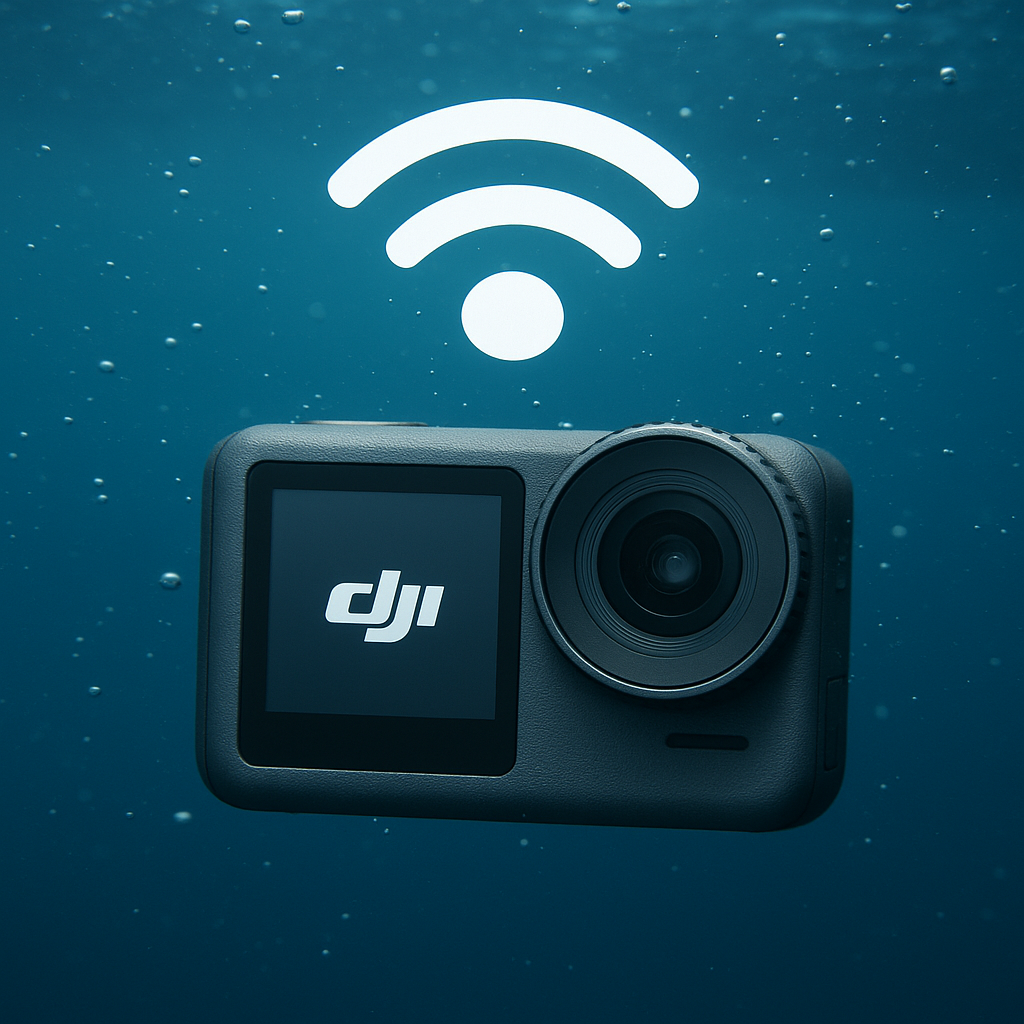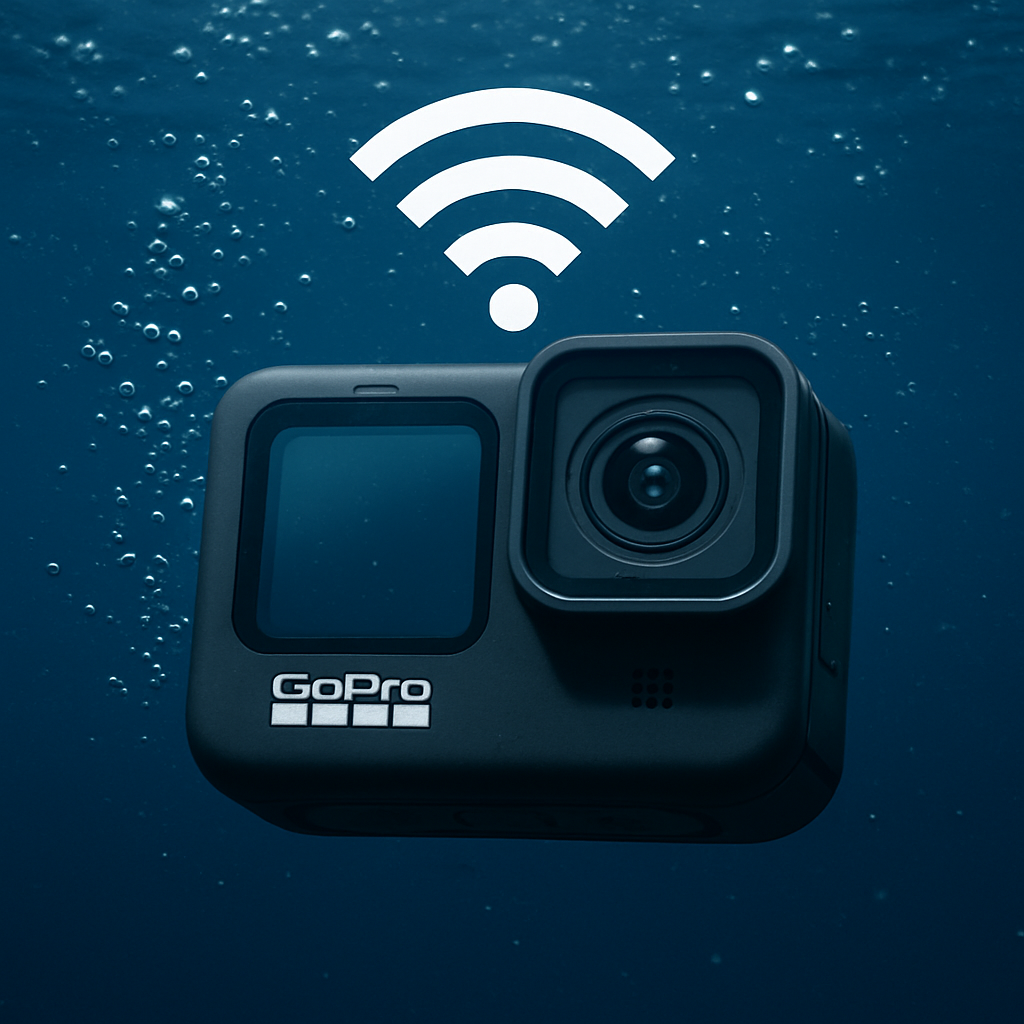Action cameras like GoPro and DJI are designed to capture incredible underwater footage, whether you’re exploring marine life or capturing fishing moments. However, when you try to use Wi-Fi or Bluetooth to connect to your camera while it’s underwater, the connection fails. This article explains why that happens and how the Seavu Kit solves this issue, allowing for seamless live underwater footage.
Why Wi-Fi and Bluetooth Fail Underwater
The Science Behind Signal Transmission
Wi-Fi and Bluetooth signals rely on radio waves to transmit data. While these signals travel well through the air, water—especially saltwater—presents a significant obstacle. Water absorbs radio frequency signals, making it nearly impossible for Wi-Fi and Bluetooth to transmit through it effectively. This is why your action camera’s connection drops as soon as it’s submerged.
Wi-Fi and Bluetooth Range Limitations
Most action cameras are equipped with Wi-Fi and Bluetooth, which work great for controlling the camera and live-streaming footage to your mobile device while it’s on the surface. However, as soon as the camera is placed underwater, the radio signals get absorbed, causing the connection to fail. This makes it difficult to preview footage or adjust settings while the camera is underwater.
How Seavu Solves the Problem
Seavu’s Wireless and Wired Hybrid Solution
Seavu solves this problem by combining wireless and wired technology to ensure uninterrupted signal transmission, even when the camera is underwater. Here’s how the Seavu system works:
- Wireless Receiver Underwater: Seavu uses a receiver that wirelessly picks up the Wi-Fi and Bluetooth signals from your action camera while it’s underwater.
- Livestream Cable: The receiver is connected to a livestream cable, which transmits the signals from the camera to the surface.
- Surface Transmitter: Once the signals reach the surface, they are wirelessly transmitted from a surface transmitter to your phone or tablet, allowing you to view the underwater footage in real-time.
Marine-Proof Design
The Seavu system is designed to handle the harsh conditions of marine environments. The wireless connection between the receiver and transmitter ensures there are no hard connections to either the camera or your phone. Hard connections, like ports and plugs, are highly susceptible to corrosion when exposed to saltwater and other elements. By avoiding these, Seavu ensures long-term durability and reliability. Seavu kits are completely marine-proof, making them ideal for prolonged use in the water.
Optimal Wi-Fi Settings for Seavu
For the Seavu system to work optimally, the action camera’s Wi-Fi band needs to be set to 2.4 GHz. This frequency is more effective for transmitting Wi-Fi signals over longer distances, which is critical when relaying the camera’s footage from underwater to the surface.
The Seavu Advantage
With Seavu, you can capture and livestream underwater footage without worrying about losing your connection or the risk of corrosion to your equipment. Whether you’re fishing, conducting marine research, or exploring underwater environments, Seavu ensures a reliable, real-time feed of your action camera’s footage. This innovative solution overcomes the limitations of Wi-Fi and Bluetooth signals underwater, giving you peace of mind when capturing those stunning underwater moments.
Conclusion
While Wi-Fi and Bluetooth don’t work underwater due to signal absorption by water, the Seavu Kit provides a reliable solution. By using a receiver to pick up signals underwater, transmitting them via a livestream cable to the surface, and wirelessly sending them to your mobile device from a surface transmitter, Seavu enables real-time live-streaming of underwater footage. With no hard connections that are prone to corrosion, and complete marine-proof design, Seavu is built to handle the harshest marine environments. Set your camera’s Wi-Fi band to 2.4 GHz for optimal performance, and you’ll be ready to capture underwater footage like never before.
Check out our solutions at the Seavu underwater Wi-Fi page and see how we solve this problem for seamless underwater footage.











